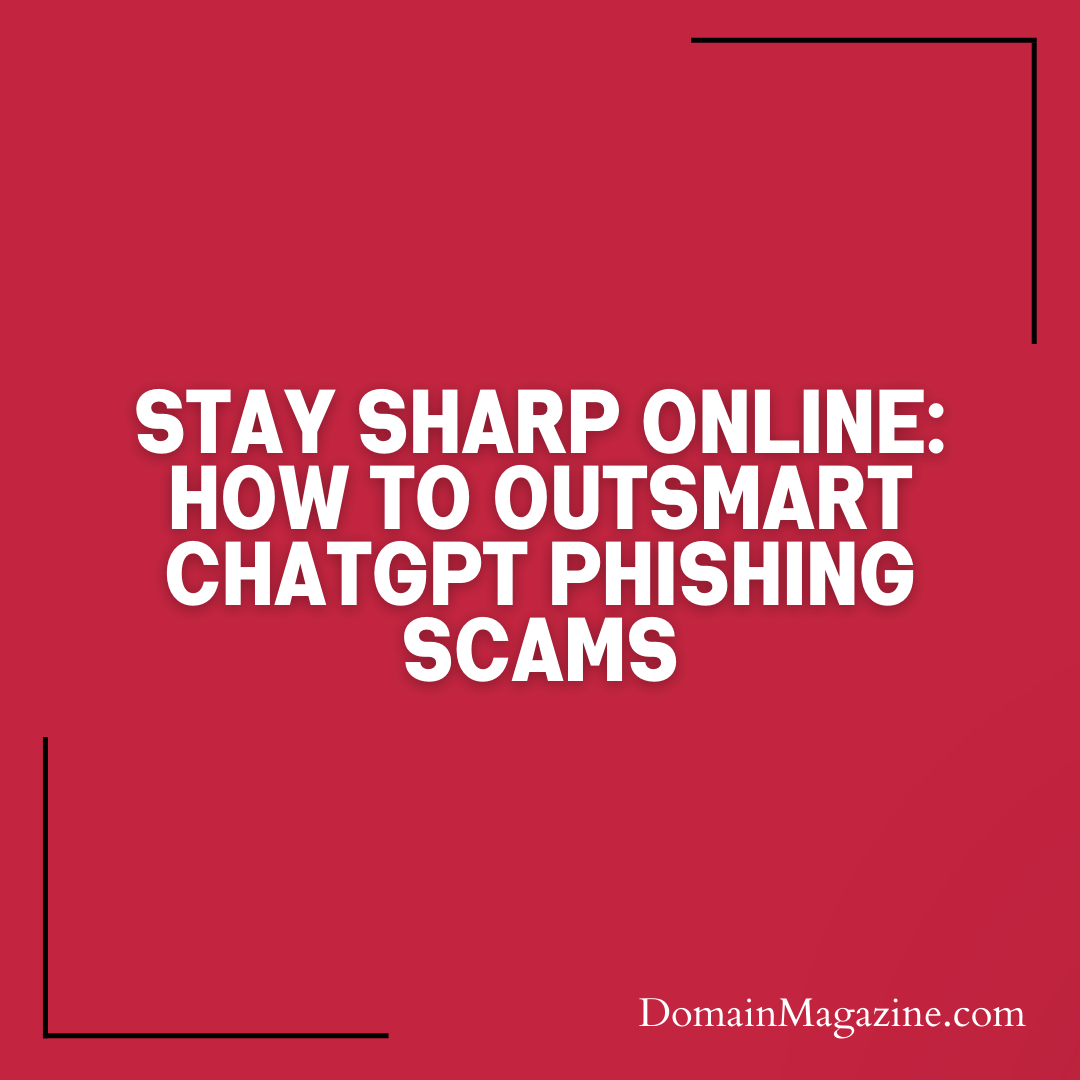In the vast sea of the internet, where sharks and dolphins swim side by side, there’s a new predator in town—ChatGPT phishing websites. These cunning scams are using the popularity of ChatGPT and OpenAI to lure unsuspecting prey into their traps. But fear not, we’ve got your back. Here’s your guide on how to spot these virtual sharks and what to do if you find yourself swimming too close to their phishing schemes.

Identifying the Phishy Business
Domain Dangers
Scammers love to play dress-up with domain names, hoping you won’t notice the imposter behind the mask. If a website claims to be ChatGPT but has a domain name that’s more confusing than a crossword puzzle, it’s likely a scam. Check for familiar domains like “openai.com” or “chat.openai.com.” If it’s not one of these, proceed with caution.
Design Deception
Phishing sites are the master illusionists of the web world. They’ll mimic the look and feel of the real ChatGPT or OpenAI website to trick you into thinking you’re in safe waters. If the website design screams “official,” but the domain is fishy, you might be facing a well-disguised impostor.
The Price of Skepticism
Remember, ChatGPT is free to use. If a website is asking for your hard-earned cash to access it, it’s a red flag. The same goes for offers that seem too good to be true. ChatGPT Plus subscriptions are only available on the official website, so steer clear of discounted imitations.
The Sherlock Checklist
Website Whodunit
A few detective skills can go a long way. Check the website’s age—if it’s a newborn on the web, it might be best to avoid. Poorly written content and a lack of details about the company are like fingerprints left at the scene of the crime—strong indicators of a scam.
Google’s Verdict
When in doubt, let Google be the judge. If a website has a rap sheet, you’ll find warnings in the search results. Trust the collective wisdom of the internet—it often knows when something smells phishy.
Lock and Key
Look for the padlock symbol in your browser’s address bar. If it’s missing, the website lacks SSL protection, and that’s a neon sign saying, “Danger, Will Robinson!” Secure websites have that extra layer of armor to protect your data.
Reporting the Culprits
Snitch for a Cause
If you stumble upon a phishing site, don’t be a silent victim. Report it to the authorities—CISA in the USA, and the NCSC in the UK are your cybercrime superheroes. Share the suspicious URL on public forums to warn others, creating a virtual neighborhood watch against these digital burglars.
Escaping the Net
Damage Control
If you’ve unwittingly entered the phishing net, fear not. Leave the website immediately and never look back. If you’ve made a purchase, contact your credit card company or bank pronto for a refund. Freeze that credit card if needed—better safe than sorry.
Cyber First Aid
Change passwords, scan for malware, and keep an eye out for phishing emails. If you’ve clicked on anything suspicious, give your browser a fresh start. Uninstall, reinstall, and breathe a sigh of relief.
Conclusion:
In the vast ocean of the internet, dangers lurk beneath the surface. But armed with knowledge, you can navigate these waters safely. Keep your eyes peeled, stay vigilant, and outsmart those phishing phantoms. The digital world is full of wonders—just make sure you’re not the catch of the day for online tricksters. Safe surfing, fellow netizens!


Join the Discussion